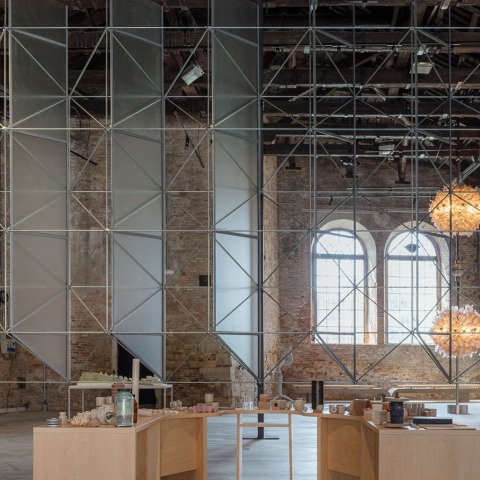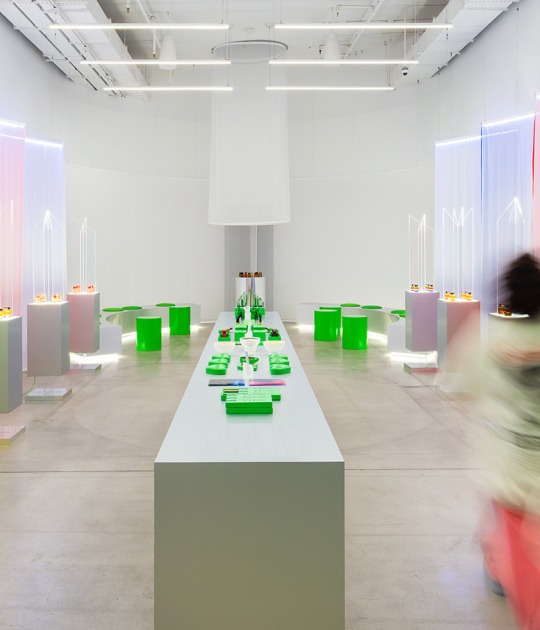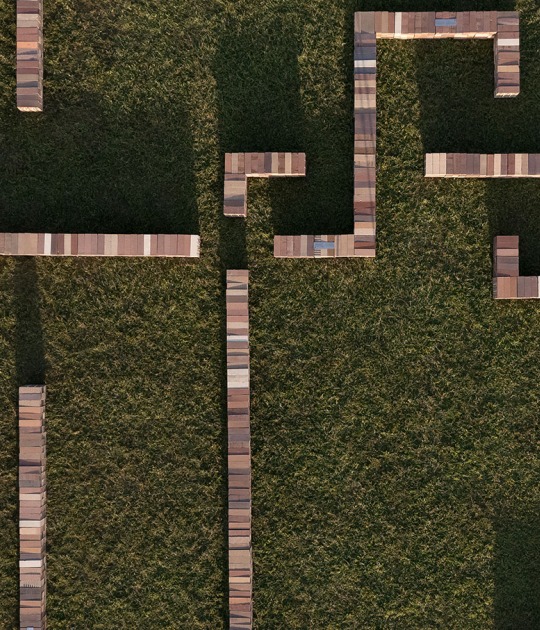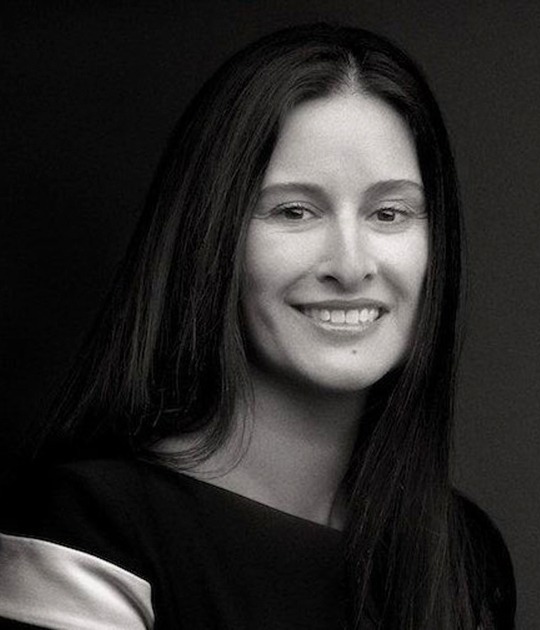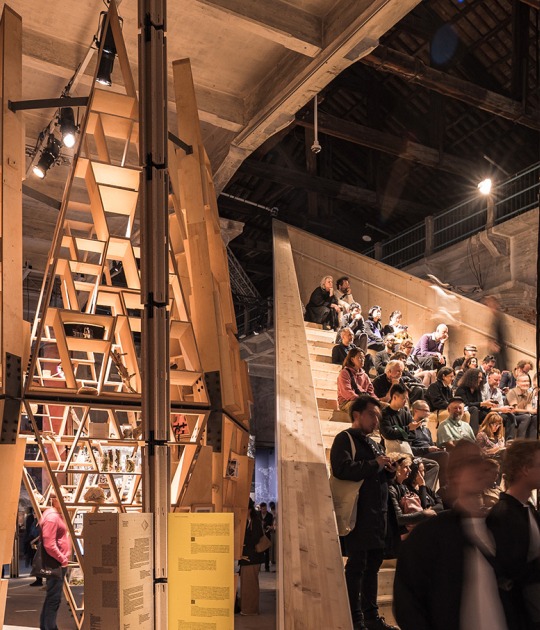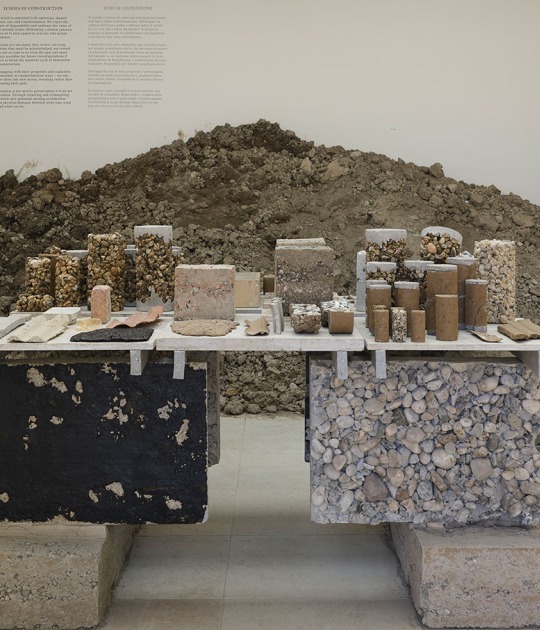In light of the ideas and functions surrounding the Sun Institute of Material Science, and the narrative the pavilion seeks to convey, the curators of the Uzbekistan Pavilion at La Biennale di Venezia 2025, Ekaterina Golovatyuk and Giacomo Cantoni of the GRACE studio, focus on highlighting the significance of existing architecture. They aim to draw attention to the country's architectural heritage while emphasizing the resilience of many of our already built structures.
The Solar Heliocomplex, now known as the Sun Institute of Material Science, is a facility completed in 1986 by the USSR. It is a large-scale project and one of only two major solar furnaces of its kind in the world.
Its original purpose was to study how different materials behave under extremely high temperatures, with a view to future applications in the aerospace industry. The complex was abandoned following the collapse of the USSR in 1991, but resumed activity in 1993 to continue research into the development of new materials—such as ceramics—and various scientific experiments. This center has been a subject of significant importance and debate, continuing to influence and provoke discussion within Uzbek society.

Pavilion Heliostat at A Matter of Radiance, 2025. Uzbekistan Pavilion. Photograph by Gerda Studio. Courtesy of the Uzbekistan Art and Culture Development Foundation (ACDF).
Located in Parkent, at the foothills of the Tian Shan mountains, the setting of the complex is defined by a dramatic topography of mountain ridges and expansive skies—an environment that reflects both the scale and the scientific ambition of the facility. Originally conceived to serve the strategic needs of the Soviet military-industrial complex, the institute carries with it a significant geopolitical legacy. Adding a distinctive cultural dimension to the site is a series of abstract sculptural works by Irena Lipene, which introduce a layer of formal experimentation within an otherwise function-driven architectural context.
The pavilion inspired by the large-scale research project Tashkent Modernism XX/XXI, devised to respond to the urgent need to protect Tashkent's modernist architectural sites, documents, reinterprets and preserves the legacy of 24 key modernist sites in the capital for the first time. Conceived by Gayane Umerova, President of the Foundation for the Development of Art and Culture of Uzbekistan.
“This pavilion holds great significance for us, as it marks not only Uzbekistan’s third participation in the International Architecture Exhibition—The Venice Biennale but also aligns with our country’s broader commitment to a sustainable and forward-looking future. In 2025, Uzbekistan officially marks the Year of Environmental Protection and the Green Economy, underscoring our dedication to ecological resilience and innovation. Building upon a series of exhibitions in Milan, Sharjah, and Tashkent, we hope that A Matter of Radiance will foster global engagement with Uzbekistan’s architectural and scientific heritage—an enduring crossroads of ideas and civilizations.”
Gayane Umerova, chairperson of the Uzbekistan Art and Culture Development Foundation.

Uzbekistan Pavilion at La Biennale di Venezia. Photograph by Luca Capuano.
In addition, the pavilion features the creations of three artists, Mukhiddin Riskiev, Ester Sheynfeld and Azamat Abbasov, each with an original work and who will focus on the Sun Institute of Materials Science as their main theme.
Mukhiddin Riskiev's work, "Nur" (meaning "ray" or "light" in Uzbek), will focus on ceramics. This is a material that works well when heated and employs high temperatures, and this is represented in the work, a round ceramic plate with a central point scorched by the concentration of the sun's rays there, symbolising the intersection between solar energy and human consciousness.

Uzbekistan Pavilion at La Biennale di Venezia. Photograph by Luca Capuano.
On the other hand, Ester Sheynfeld's work will be entitled "Place of Power", "Radiance of the Timeline". The artist tries to show the scientists' workspace, looking for an approach to everyday life and the ideological aspect of the Institute. Through elements such as gowns resting on chairs, half-open flasks, labels and other objects that are arranged in semicircles reflecting the planetary orbits around the sun, they symbolise both their scientific legacy and the relentless pursuit of discovery.
Finally, Azamat Abbasov presents "Palace of the Sun", an experimental video that uses point cloud technology to explore the spatial and symbolic dimensions of The Sun Institute of Material Science. The video shows a 3D representation of the journey from the pavilion to the solar complex, offering the viewer a distant and atmospheric perspective of the architecture and its legacy, inviting reflection through image and movement.

A Matter of Radiance, Uzbekistan Pavilion, 2025. Photograph by Gerda Studio.
In addition to the various works by the artists, the pavilion displays other artistic elements such as fragments of the centre - a table from the control room, a façade parasol, a chandelier, a painting and a bench - either reconstructed with modifications or brought from Uzbekistan and adapted. They are accompanied by six images by photographer Armin Linke, showing the most important and remarkable parts of the complex.
The exhibition also serves as the stage design for a theatrical performance by Ilkhom Theatre, imagining a secret project of humanity recreating the sun. Founded in 1976 in Tashkent, the Ilkhom Theatre is a unique cultural phenomenon in Uzbekistan. It was the first independent theatre in the Soviet Union and preserves its autonomy today, providing a platform for creative experimentation and new forms of theatrical art.
